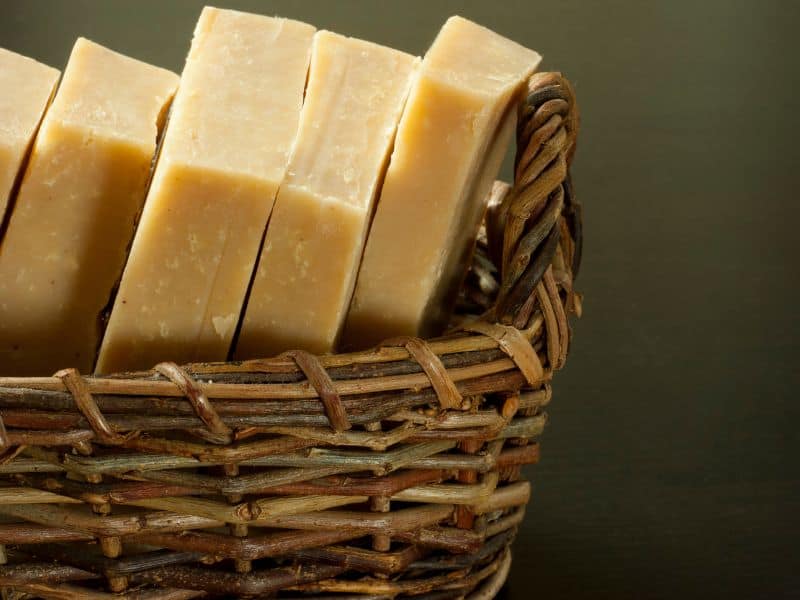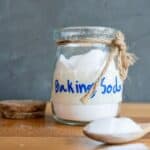Soap making is a popular hobby for those who love to create things from scratch. However, the process of soap making doesn’t end once the soap is made. Curing soap is a crucial step in the soap-making process that ensures that the soap is safe and effective to use. In this article, we will discuss how long soap needs to cure, and how to know when soap is fully cured.
Soap needs to cure for 4-6 weeks. During this time, excess water and moisture evaporate from the soap, making it harder and milder on the skin. However, the curing time can vary depending on several factors, such as the type of soap, the recipe used, and the storage conditions.
For example, basic melt-and-pour soaps tend to cure more quickly than cold-process or hot-process soaps. They can be ready for use after drying for a few days rather than weeks. Let’s take a closer look at the curing process.
Explanation of Soap Curing
Soap curing is the process of letting soap sit and age before it is ready for use. During this process, the soap will harden and dry out. As the soap dries out, the excess moisture evaporates, making the soap less harsh and more gentle on the skin.
Explanation of the general curing time for soap
The general curing time for soap is four to six weeks. This time frame allows the soap to fully dry out and reach its optimal hardness level. However, the curing time can vary depending on the type of soap, the ingredients used, and the humidity in the environment.
How long does homemade soap need to sit before using?
Homemade soap needs to sit for at least four weeks before it is ready for use. Even if the soap looks hard and dry on the outside, it may still contain too much moisture on the inside.
Why does soap have to cure for 4 weeks?
Soap needs to cure for four weeks because the curing process allows excess moisture and water to evaporate from the soap. This helps make it harder and milder on the skin. Additionally, curing also helps the soap to reach its optimal hardness level.
What happens if you use homemade soap too soon?
If you use homemade soap too soon, it could contain too much moisture in the middle. This could result in a slimy texture that can be difficult to lather. Additionally, it may not be as effective at cleansing the skin due to its low hardness level.
What happens if you use cold process soap before it cures?
If you use it too soon, it may not be as effective at cleansing due to its low hardness level. Additionally, the soap may be too soft and slimy, making it difficult to lather and use.
Does bar of soap get better with age?
Bar of soap does get better with age. As the soap ages, it will become harder and milder on the skin due to the evaporation of excess moisture. Additionally, the soap will also reach its optimal hardness level, making it more effective at cleansing.
What happens if you don’t use soap for a year?
If you don’t use soap for a year, it may start to develop an off-putting odor. Additionally, the soap will start to harden and become more brittle, making it difficult to use. It is best to use soap within a year for the optimal cleansing experience.
Factors that can affect the curing time of soap
There are several factors that can affect the curing time of soap. For example, the amount of water in the soap, the type of oil used, and the humidity in the environment can all impact the drying time of the soap.
How to Know When Soap is Cured
Physical signs that indicate soap is cured include a change in texture and color.
Physical signs that indicate soap is cured
Cured soap will be hard and dry to the touch, and it will have a duller appearance than fresh soap.
Testing soap for pH levels
Testing soap for pH levels is also an effective way to determine if soap is cured. When soap has finished curing, its pH level will be between 8 and 10.
Benefits of Curing Soap
Let’s discuss the benefits of curing soap and provide tips for properly curing soap.
Better texture and lather
Cured soap has a better texture and lather than freshly made soap. As the soap dries out, it becomes harder and more dense, resulting in a better quality product. Additionally, the lather produced by cured soap is more luxurious and bubbly, making for a more enjoyable and effective washing experience.
Longer-lasting soap
Longer-Lasting Soap
Cured soap lasts longer than freshly made soap. As the soap cures, excess moisture evaporates, making the soap less likely to dissolve quickly when exposed to water. This means that cured soap will last longer in the shower or at the sink, reducing the need to make new batches of soap as frequently.
Reduced risk of skin irritation
Cured soap is less likely to cause skin irritation than freshly made soap. As the soap dries out, it becomes less harsh and more gentle on the skin. This is especially important for those with sensitive skin who may experience irritation or dryness from using freshly made soap.
Tips for Properly Curing Soap
To properly cure soap, it is important to follow these tips:
Proper storage conditions
Store the soap in a cool, dry place where it can breathe. Avoid storing the soap in plastic containers or wrapping it in plastic wrap, as this can trap moisture and prevent the soap from properly curing.
How to label and track cured soap
Label the soap with the date it was made and the date it should be ready to use. Keep track of the curing time in a soap-making journal or notebook to help you plan for future batches.
Frequently Asked Questions
Curing soap for a longer period of time can result in a harder and longer-lasting bar of soap. It can also improve the lather and make the soap milder and gentler on the skin.
Soap should be cured by placing it on a drying rack or in a well-ventilated area with good air flow. It should be kept out of direct sunlight and away from heat sources. It’s also a good idea to turn the soap occasionally to ensure even drying.
Technically, soap can be used before it is fully cured. However, it may not be as mild or long-lasting as fully cured soap. It’s generally recommended to wait at least 2-3 weeks before using soap to ensure that it has had time to harden and mellow.
Fully cured soap will be hard and firm to the touch, and it will not feel sticky or soft. It may also have a slightly lighter color than when it was first made.
If soap is not cured properly, it may be soft, sticky, or prone to melting in the shower. It may also have a short shelf life and go rancid quickly.
There are a few tricks that may speed up the curing process, such as using a dehumidifier or placing the soap in a warm, dry room with good air flow. However, it’s generally not recommended to rush the curing process as it can affect the quality of the soap.
No, it’s not recommended to cure soap in the refrigerator or freezer as it can cause condensation to form on the soap, which can result in soft or mushy bars.
Conclusion
In conclusion, curing soap is a crucial step in the soap-making process that offers several benefits. Cured soap has a better texture and lather, lasts longer, and is less likely to cause skin irritation.
To properly cure soap, it is important to store it in the right conditions and keep track of the curing time. By taking the time to properly cure your soap, you can enjoy a better quality product that is safe and effective to use.






